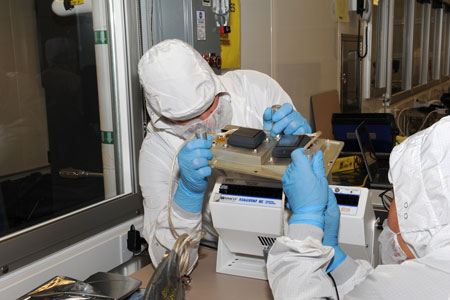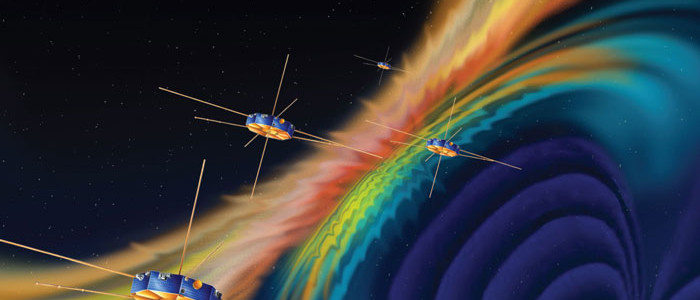Last week NASA launched four satellites to explore the phenomenon of magnetic reconnection, a known phenomenon, but not clearly understood by the scientists. To hold the satellites in a known position in space the four satellites are, like nearly fifty other satellites and probes in space, equipped with star cameras from DTU-space, Denmark.
The cameras in the MMS satellites are intended to ensure that the vessels remain in the correct position in space. As each of the craft is fitted with a 120-metre-long boom and has to fly in a precisely planned formation, maintaining internal spacing of 10 km, and a distance from the Earth of between 900 and 150,000 km, accurate control of the vessels in space is quite simply crucial to the success of the mission.
The star cameras are used as a ‘compass’ for the spacecraft, allowing researchers to pinpoint their position in space.
A stellar compass comprises two main parts, a digital camera that photographs the night sky and a computer that matches the digital images against a stellar map stored in the computer.
The compass compares the photographic image with the stellar map to define the exact position of the spacecraft.
The star cameras from DTU Space have been especially designed for the MMS mission, and they are considered key components in the vessels’ control systems.
DTU Space and NASA have been working together for almost two decades, and NASA has already used the star cameras on a number of missions. NASA is clearly delighted to have the DTU technology on its MMS vessels.
The Mission Task – More Knowledge
Magnetic reconnection is the term for the process that takes place when two magnetic fields connect and then disconnect again. The connection is accompanied by an explosive transfer of energy. Magnetic reconnection takes place throughout the universe. It is also often observed in the Sun, where it causes solar flares.
Closer to Earth—where the MMS vessels are to take up their positions—magnetic reconnection occurs when particles from solar flares come into contact with the Earth’s magnetic field. This interaction is similarly accompanied by huge yet invisible transfers of energy between the Earth and the Sun. These energy transfers affect what is known as ‘space weather’, which causes the electrical storms that create the magnificent Northern Lights, but can also disrupt the electronic components in satellites and cause leakage current in electrical circuits on Earth. This is a problem that primarily affects long high-voltage cables, and which can cause power outages in the electricity grid.

Staff at NASA are inspecting the star camera from DTU Space. Credit: NASA.
The star cameras from DTU Space have been especially designed for the MMS mission, and they are considered key components in the vessels’ control systems. After launch, the cameras on the four spacecraft will supply the control systems with data that will allow us to establish their position and speed with remarkable accuracy. This is a demanding task, given that each vessel is to rotate on its own axis three times per minute while maintaining its position in a set geometric formation.
In September, the four vessels that make up the MMS mission, will be in position to start investigating the phenomenon of magnetic reconnection around the Earth.
Source: DTU-space – News and NASA. Featured picture: NASA
The MMS Mission
The Magnetospheric Multiscale, or MMS, studies the mystery of how magnetic fields around Earth connect and disconnect, explosively releasing energy via a process known as magnetic reconnection. MMS consists of four identical spacecraft that work together to provide the first three-dimensional view of this fundamental process which occurs throughout the universe.
The mission observes reconnection directly in Earth’s protective magnetic space environment; the magnetosphere. By studying reconnection in this local, natural laboratory, MMS helps us understand reconnection elsewhere as well, such as in the atmosphere of the sun and other stars, in the vicinity of black holes and neutron stars, and at the boundary between our solar system’s heliosphere and interstellar space.


